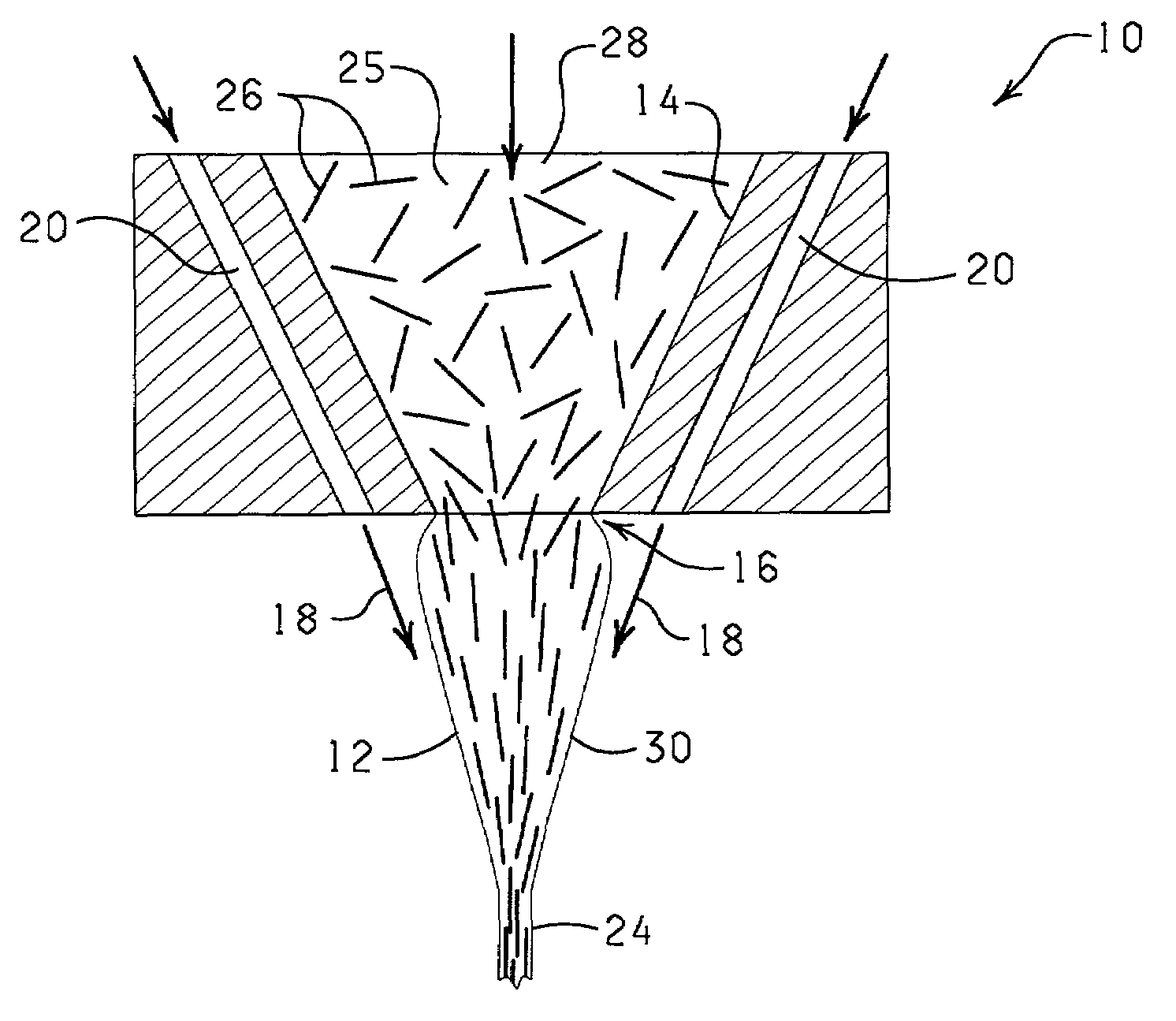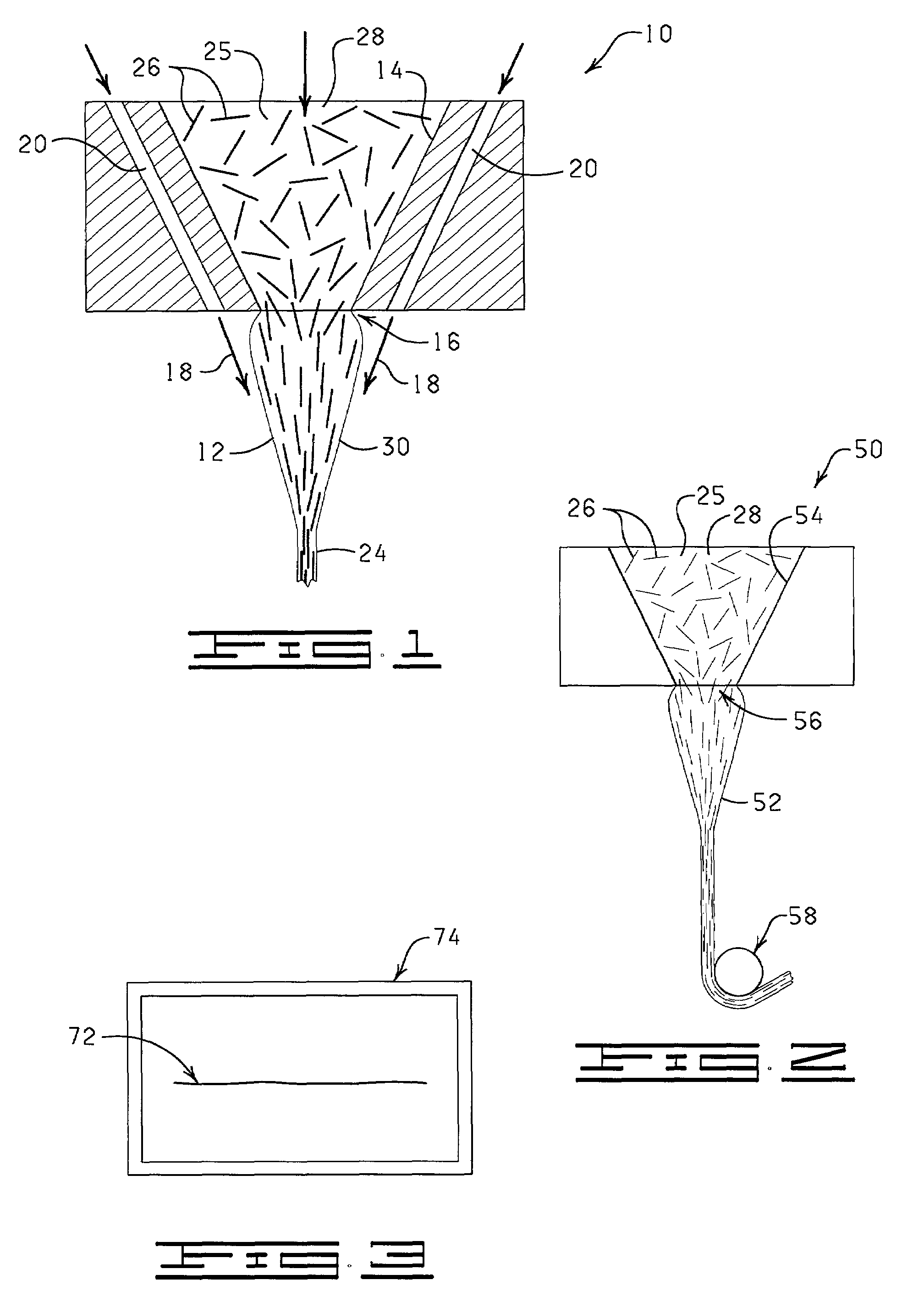Method for forming a fibers/composite material having an anisotropic structure
a composite material and fiber technology, applied in the field of fiber/composite material forming, can solve the problems of serious production problems in the commercialization of carbon nanotubes, and achieve the effects of enhancing the anisotropic structure of the extruder, significant potential, and enhancing the orientation/alignment of the fibers
- Summary
- Abstract
- Description
- Claims
- Application Information
AI Technical Summary
Benefits of technology
Problems solved by technology
Method used
Image
Examples
Embodiment Construction
[0011]The present invention is a method for producing fibers / composite material having an anisotropic structure which can be commercially produced utilizing commercially available equipment. In general, effective amounts of fibers are mixed with a matrix material to form a deformable mixture containing less than about 96 weight percent of the fibers to about parts per billion of the fibers and wherein the fibers are randomly oriented in the deformable mixture. The liquid mixture is then passed through an orifice or a capillary (e.g. extruded) to form an extrudate. Shear attenuation pressure is applied about the extrudate, either as the extrudate passes through the orifice or capillary, and / or after the extrudate passes through the orifice or capillary, to substantially compress the fibers in the extrudate and to provide the fibers / composite material having an anisotropic structure, e.g. the fibers / polymer material is substantially aligned with the longitudinal axis of the extrudate....
PUM
| Property | Measurement | Unit |
|---|---|---|
| Percent by mass | aaaaa | aaaaa |
| Pressure | aaaaa | aaaaa |
Abstract
Description
Claims
Application Information
 Login to View More
Login to View More - R&D
- Intellectual Property
- Life Sciences
- Materials
- Tech Scout
- Unparalleled Data Quality
- Higher Quality Content
- 60% Fewer Hallucinations
Browse by: Latest US Patents, China's latest patents, Technical Efficacy Thesaurus, Application Domain, Technology Topic, Popular Technical Reports.
© 2025 PatSnap. All rights reserved.Legal|Privacy policy|Modern Slavery Act Transparency Statement|Sitemap|About US| Contact US: help@patsnap.com


